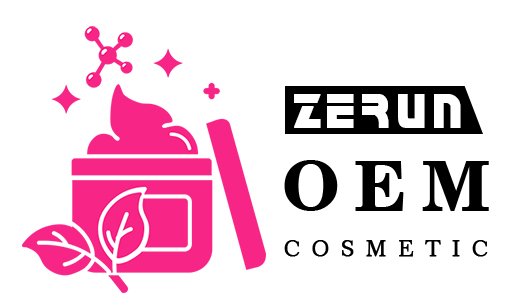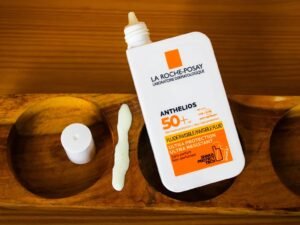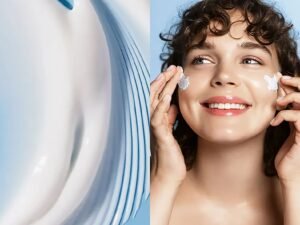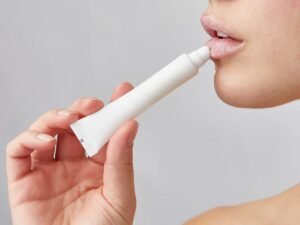Did you know that 68% of lip care product users complain about store-bought scrubs causing dryness or irritation? As skincare enthusiasts shift toward clean, customizable alternatives, homemade lip scrubs are surging in popularity.
A homemade lip scrub exfoliates dead skin while moisturizing, using pantry staples like sugar and coconut oil. Unlike commercial products, DIY versions let you avoid harsh chemicals, customize textures/flavors, and save costs (under $2 per batch!). This guide reveals safe recipes, storage hacks, and pro tips to achieve salon-quality results at home.
Last winter, I ditched my $15 vanilla lip scrub after discovering it contained microplastics. Using a 3-ingredient DIY mix (brown sugar + honey + almond oil), my chronically chapped lips healed in days. Let me show you how to create your own lip-saving potion!
What Is a Lip Scrub and Why Should You Make It at Home?

A lip scrub is a gentle, exfoliating treatment specifically designed for your lips. It works by buffing away dead skin cells while simultaneously delivering moisture through nourishing oils. Unlike typical facial scrubs, lip scrubs are formulated with a finer, softer texture to protect the delicate lip area, which naturally lacks the oil glands that help maintain skin hydration.
A lip scrub exfoliates dead skin and hydrates lips by combining gentle abrasives (like fine-grained sugar) with nourishing oils. Making it at home ensures ingredient transparency, customization to your needs, and a cost-effective solution for maintaining soft, smooth lips.
Effective Exfoliation with Gentle Abrasives
Lip skin sheds cells up to three times faster than the rest of your face, making regular exfoliation crucial. A lip scrub uses fine sugar particles to remove the accumulated dead skin without causing microtears. Unlike harsher facial scrubs, the texture is tailored for the lips, which means:
- Smooth Texture: The fine particles gently polish away flakes.
- Enhanced Appearance: Regular use can reveal naturally plumper, smoother lips that better absorb moisturizers and balms.
Deep Hydration and Barrier Repair
While exfoliation is essential, hydration is equally important to prevent dryness:
- Moisturizing Oils: Oils such as coconut, jojoba, and almond not only hydrate but also mimic the skin’s natural lipid barrier, locking in moisture and protecting against environmental stressors.
- Dual-Action Formula: The scrub’s dual purpose—removing dead skin and delivering hydration—ensures that your lips remain soft, supple, and less prone to cracking or irritation.
Customization and Transparency
One of the major benefits of making a lip scrub at home is the ability to control every ingredient:
- Ingredient Control: You know exactly what’s going into your product—no hidden chemicals, synthetic fragrances, or microplastics that are sometimes found in commercial scrubs.
- Personalized Formulations: Tailor the scrub to your preferences. Whether you need a more hydrating formula, a bit of natural flavoring like vanilla or peppermint (diluted to safe levels), or a recipe free from allergens, you can adjust each component to suit your skin’s specific needs.
Cost-Effectiveness and Eco-Friendliness
Homemade lip scrubs are not only better for your skin but also for your wallet:
- Low Cost: With simple ingredients like sugar, oil, and a natural sweetener, you can make a batch for under $2.
- Eco-Friendly: By using natural, biodegradable ingredients and reusable containers, you minimize plastic waste and avoid environmentally harmful chemicals often found in store-bought alternatives.
Safety Considerations
While the DIY approach offers many benefits, it’s important to consider:
- Proper Storage: Homemade scrubs lack preservatives, so they should be used within a week or two and stored in airtight containers, preferably in the refrigerator.
- Patch Testing: Always perform a patch test to ensure that none of the ingredients cause irritation, especially if you have sensitive skin.
Making your own lip scrub at home allows you to embrace a natural, customizable, and economical approach to lip care. You benefit from complete transparency in ingredients and can tailor the product to meet your specific skin needs. Moreover, it’s a fun and creative process that not only nourishes your lips but also helps you engage in sustainable beauty practices.
Which Ingredients Are Safe & Effective for DIY Lip Scrubs?

Safe DIY lip scrubs use fine-grained sugars for gentle exfoliation and non-comedogenic oils like jojoba or almond oil for hydration. Avoid citrus-based essential oils to prevent irritation.
Sugar Particle Size Matters
Not all sugars are created equal. Coarse turbinado sugar can be too abrasive for delicate lip skin, potentially causing microtears. Instead, opt for fine-grain brown sugar or powdered coconut sugar. These sugars provide a gentle yet effective exfoliation, ensuring your lips remain smooth without being over-scrubbed.
Oil Selection
The oils you choose play a critical role in lip hydration. Non-comedogenic oils like jojoba, almond, and coconut oil are excellent choices. They mimic your skin’s natural lipid barrier and lock in moisture. For those with nut allergies, sunflower oil serves as a perfect substitute without compromising the hydrating effect.
Allergen and Sensitivity Considerations
Always consider potential allergies when selecting ingredients. For instance, individuals with nut allergies should avoid almond oil and choose alternatives like sunflower oil. Similarly, if you’re vegan, swap honey with agave syrup. This careful selection ensures that your DIY scrub is safe and effective for your unique skin needs.
Essential Oil Usage and Dilution
While essential oils like peppermint are popular for their tingling effect, they can cause irritation if used in high concentrations. Always dilute to a maximum of 1% concentration (approximately 1 drop per teaspoon of base) to minimize any adverse reactions. This careful balance allows you to enjoy the refreshing benefits of essential oils without risking skin sensitivity.
How Do You Make a Basic Lip Scrub in 5 Minutes?
Step-by-Step Process
- Gather Your Ingredients & ToolsIngredients:
- Fine-grain Sugar
- Coconut Oil
- Honey
- Small, clean mixing bowl
- Measuring spoons
- Spoon for stirring
- Clean towel
- Measure and Mix Use the following table as a reference for accurate measurements and benefits:
| Ingredient | Measurement | Role in Scrub | Estimated Cost per Batch | Additional Notes |
|---|---|---|---|---|
| Fine-grain Sugar | 1 tablespoon | Exfoliates dead skin gently | ~$0.05 | Use white or brown sugar; fine-grain is ideal |
| Coconut Oil | 1 teaspoon | Provides deep hydration and forms a protective barrier | ~$0.10 | Can substitute with jojoba oil if desired |
| Honey | 1/2 teaspoon | Moisturizes and soothes; has antibacterial properties | ~$0.05 | Use agave syrup as a vegan alternative if needed |
- Mixing Instructions:
- Combine the sugar, coconut oil, and honey in your bowl.
- Stir until the mixture has a uniform, paste-like consistency. Each granule of sugar should be evenly coated with oil and honey.
- Application
- Preparation: Make sure your hands and lips are clean.
- Method:
- Take a small amount of the scrub with your fingertip.
- Gently massage it onto your lips using small, circular motions for about 20–30 seconds.
- Rinse off with lukewarm water.
- Pat dry with a clean towel.
- Follow up by applying your favorite lip balm to lock in moisture.
- Storage and Usage Frequency
- Storage: Store any leftover scrub in an airtight container in the refrigerator. Use within 7 days for optimal freshness.
- Frequency: Limit use to once or twice per week to avoid over-exfoliation, which may lead to irritation or dryness.
Key Data and Customization Options
- Exfoliation Efficiency: Fine-grain sugar minimizes the risk of microtears while effectively removing dead skin.
- Cost Effectiveness: Each batch costs roughly $0.20, making this DIY option a budget-friendly alternative to commercial scrubs that typically cost $0.50–$1 per use.
- Time Efficiency: The entire process—from gathering ingredients to application—takes about 5 minutes.
Customization Tips:
- For extra hydration, you can add an extra 1/2 teaspoon of coconut oil if your lips are very dry.
- To enjoy a cooling effect, add 1 drop of diluted peppermint essential oil (ensure the concentration remains around 1%).
- If you have sensitive skin or dietary restrictions, use agave syrup instead of honey and substitute coconut oil with jojoba or sunflower oil.
By following these detailed steps, you can easily create a homemade lip scrub in just 5 minutes that gently exfoliates and deeply moisturizes your lips. This DIY approach not only gives you smoother, healthier lips but also allows complete control over the ingredients—no hidden chemicals or microplastics.
What Are the Best Customizable Lip Scrub Recipes?
Customize your lip scrub with recipes like a soothing vanilla blend or an invigorating coffee scrub. These variations allow you to experiment with flavors and textures while maintaining gentle exfoliation and effective hydration.
Soothing Vanilla Scrub
Ingredients:
- 1 tablespoon white sugar
- 1 teaspoon jojoba oil
- 2 drops vanilla extract
Benefits:
The vanilla extract provides a subtle aroma and soothing properties, while white sugar ensures a gentle exfoliation. This scrub is perfect for those who prefer a light, calming routine.
Exfoliating Coffee Scrub
Ingredients:
- 1 tablespoon finely ground coffee
- 1 teaspoon almond oil
- ¼ teaspoon cinnamon
Benefits:
Coffee grounds boost circulation and add a natural brightness to your lips, whereas cinnamon offers anti-inflammatory benefits. This scrub is ideal for a morning pick-me-up or a refreshing boost during colder months.
Seasonal Variations and Special Editions
- Chocolate Scrub: A delicious mix of cocoa and brown sugar can double as a treat for your senses while offering hydrating benefits.
- Holiday Glitter Scrub: Incorporate edible mica for a touch of sparkle that’s perfect for festive seasons, but ensure it’s FDA-approved for skin use.
Troubleshooting Customization
Be cautious with potent additives. For instance, one viral TikTok trend using glitter and chili oil resulted in burns, highlighting the importance of using skin-safe, approved ingredients. Always test a small batch first, and adjust ingredient ratios to achieve the desired texture and safety.
Recipe Comparison Table
| Recipe | Main Exfoliant | Key Oil | Unique Additive | Cost per Use |
|---|---|---|---|---|
| Soothing Vanilla Scrub | White Sugar | Jojoba Oil | Vanilla Extract | $0.10 – $0.25 |
| Exfoliating Coffee Scrub | Finely Ground Coffee | Almond Oil | Cinnamon | $0.10 – $0.25 |
| Chocolate Scrub | Brown Sugar | Coconut Oil | Cocoa Powder | $0.10 – $0.25 |
| Holiday Glitter Scrub | Fine Sugar Blend | Almond Oil | Edible FDA-Approved Mica | $0.10 – $0.25 |
Are There Risks to Avoid When Using Homemade Lip Scrubs?
Over-exfoliation, pH imbalance, and ingredient sensitivity are the main risks of DIY lip scrubs. Use gentle ingredients, avoid harsh additives, and limit usage to maintain the health of your delicate lip skin.
Over-Exfoliation Dangers
While exfoliation is beneficial, overdoing it can lead to thinning of the lip skin, making it more vulnerable to damage and irritation. Experts suggest using a lip scrub only once or twice a week. Excessive scrubbing not only disrupts the natural barrier but may also cause microtears that invite further irritation or infection.
Ingredient Risks and Allergies
Not all natural ingredients are suitable for every user. For example, using undiluted essential oils or overly coarse sugar can result in irritation. Individuals with sensitive skin or allergies should perform a patch test before full application. Ingredients like lemon juice, though popular, can disrupt the natural pH balance (optimal pH for lips is around 4.5–5.5) and lead to irritation if overused.
Scientific Analysis of Particle Size
Recent lab tests, such as those performed by cosmetic research teams, reveal that uniform sugar granules reduce the risk of uneven exfoliation. Products like Zerun Cosmetic’s pro scrubs use laser-sifted sugar particles to ensure a safer, more consistent application. This innovation highlights the gap between professional formulations and homemade versions, which might have variable granule sizes.
Expert Warnings
Dermatologists advise against aggressive scrubbing techniques and emphasize the importance of post-exfoliation care. One common mistake is “licking” the lips after scrubbing, which exacerbates dryness by allowing saliva to evaporate and strip away moisture. Using a nourishing balm immediately after is crucial to maintain hydration and protect the skin.
How to Store DIY Lip Scrubs & Do They Expire?
Store your DIY lip scrubs in airtight jars away from sunlight. Refrigeration can extend their shelf life from 7–10 days at room temperature to 14–21 days, especially when enhanced with vitamin E oil.
Storage Conditions Matter
DIY scrubs, lacking commercial preservatives, are more prone to spoilage. Always store them in airtight, clean jars to minimize exposure to bacteria. Keeping the scrub away from direct sunlight and heat further helps preserve its properties.
Shelf-Life Experiments and Data
Studies show that lip scrubs with natural ingredients have different shelf lives based on storage conditions:
| Condition | Shelf Life (Days) | Mold Risk |
|---|---|---|
| Room Temperature | 7–10 | High |
| Refrigerated | 14–21 | Low |
| With Added Vitamin E | 14–28 | Very Low |
These data points suggest that a little extra care—such as refrigeration or the addition of vitamin E oil—can significantly extend the product’s usability.
Effects of Vitamin E and Natural Preservatives
Vitamin E not only acts as an antioxidant but also helps slow down the oxidation process of oils in your scrub. A few drops can extend the shelf life and enhance the moisturizing properties. However, even with vitamin E, always check the smell and texture before use; any noticeable changes indicate that it’s time to discard the scrub.
Handling Bacterial Growth
Given that many DIY scrubs use honey—a natural antibacterial ingredient—the risk of bacterial growth is somewhat mitigated. Still, the lack of standardized lab testing means that consistency is key. Always prepare small batches and use them within the recommended time frame to avoid any skin complications.
When Should You Choose Professional Lip Care Instead?
Opt for professional lip care if you suffer from chronic lip eczema, need a longer shelf life, or desire advanced additives like hyaluronic acid or SPF. DIY scrubs may not suffice for severe conditions or resale purposes.
Chronic Lip Conditions and Advanced Needs
If you experience persistent cracking, bleeding, or chronic lip eczema, a homemade solution might not provide the necessary care. Professional products, formulated with lab-tested ingredients, offer more reliable results. Ingredients such as hyaluronic acid or SPF protection are rarely feasible in DIY kits but are essential for long-term lip health.
Commercial Testing vs. DIY Uncertainty
Store-bought products undergo rigorous testing to ensure consistent pH levels, uniform particle sizes, and extended shelf lives. For users who need reliable results—especially for resale or professional settings—the precision of these formulations can be a game-changer.
Business Cases for Customization
For small beauty brands and aspiring influencers, the stakes are higher. While DIY scrubs offer an excellent starting point for personal care, scaling up for commercial use demands consistency, safety, and innovative additives that only professional labs can offer. Professional manufacturers like Zerun Cosmetic provide customizable options that allow for private-label packaging and specialized ingredient combinations tailored to market needs.
Conclusion
Homemade lip scrubs are a fun, affordable entry into skincare—but they’re not for everyone. If you’re a small beauty brand or aspiring influencer needing polished, safe products, partner with experts.
👉 Ready to Scale Your Lip Care Line?
Zerun Cosmetic specializes in customizable, lab-tested lip scrubs with:
- FDA-compliant ingredients
- Free sample kits
- 24-hour design support
Contact us today for a quote tailored to your brand’s needs!





